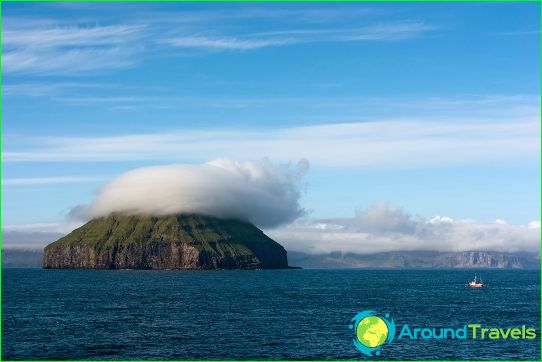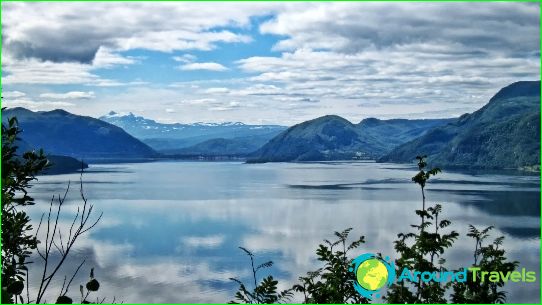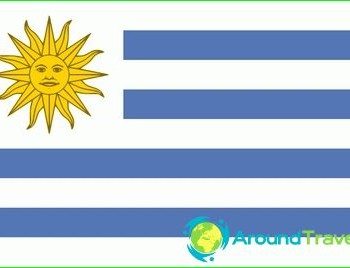Norwegian sea

The Norwegian Sea belongs to the marginal seas of the Arctic Ocean. It stretches between Iceland, Jan Mayen Island and the Scandinavian Peninsula. The sea occupies an area on the continental slope of Eurasia and borders the Barents North and Greenland Seas, as well as the Atlantic Ocean. The sea covers an area of about 1383 thousand square meters. km. Its average depth is 1700 m, and the maximum depth is 3734 m. The Shetland and Faroe Islands, located on an underwater ridge, separate the Norwegian Sea from the Atlantic Ocean. Shoals prevail off the coast of Norway.
The sea does not freeze in winter thanks to the warm Norwegian current. This feature distinguishes it from other arctic reservoirs. A warm current is a favorable factor that determines the development of the flora and fauna of the water area. Here the flora and fauna are much richer and more diverse than in other seas of the Arctic Ocean. The Norwegian Sea has a bowl-shaped bed with a depression in the middle. The shelf zone has significant oil reserves. Development in the water area is being carried out by Norway. The sea is distinguished by strongly indented rocky shores. The Norwegian Sea map shows many headlands, bays, spits and fjords. The tides in this reservoir are high - up to 3.5 m.
Climatic conditions
The Norwegian Sea is located in the northern part of the temperate zone. Its significant part occupies a large area beyond the Arctic Circle. Therefore, it is influenced by the maritime temperate climate. In the area of the Norwegian Sea, there is high humidity, cloudiness, small seasonal temperature fluctuations. Winters are mild here and summers are relatively warm. In winter, south-westerly winds blow over the water area, which often turn into stormy ones. Sometimes the Norwegian Sea is hit by hurricanes. The largest waves reach 9 m in height.
The air temperature in winter varies from -4 to +4 degrees. On the coast of the Norwegian Sea, windy, cloudy, unstable weather is almost always. In summer, the winds subside, and the air temperature rises to +10 degrees. In summer, there are fewer cloudy days, however, fogs are often observed.
Fauna and flora
A variety of algae grow in the Norwegian Sea: kelp, fucus, porphyry, etc. Various types of kelp are mined on a large scale for industrial purposes. All kinds of benthic animals can be found in coastal areas.
Use of the Norwegian Sea
Most of the sea remains ice-free all year round, although the body of water is considered to be ice-covered. Ice occurs only in winter in areas bordering the Greenland and Barents Seas. Cod, mackerel, seabass and Atlantic herring are fished in the Norwegian Sea.



